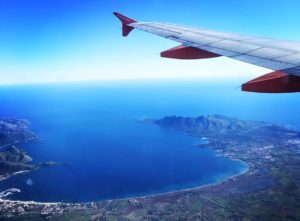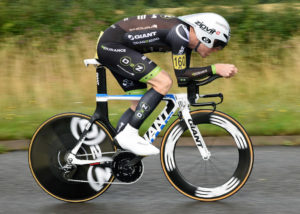Utter the word ‘spring’ into the ear of any sane person and they’ll instantly think of blossom, baby lambs and new beginnings. Speak the word into a cycling fan’s ear and they’ll only hear one thing: cobblestones.
These bone-shattering stones mark the arrival of our own spring season, not one where flowers bloom and birds tweet, but where bikes, bones and dreams are all broken – dashed upon the cobblestones that litter the Spring Classics.
https://www.instagram.com/p/BvrJIQylvg-/
It’s a season that we all, as cycling fans, look forward to, waiting with bated breath as the days tick down to the first cobbled classic of the season, Omloop Het Nieuwsblad. This race and the several that follow, however, are mere tasters for the spectacles that are yet to come, the two races that define the Spring Classics, the Tour of Flanders and Paris-Roubaix – undisputed King and Queen of the Classics.
Separated by just seven days, these two races often produce some of the most unforgettable moments of the year, enough to fill a whole season’s highlight reel. Forget the frivolous grandeur of the Tour de France or the poncey pretence of the Giro d’Italia, these are the two races that encapsulate racing in its purest form.
But which one is the best? It’s a question that has sparked many a debate among cycling circles with no clear consensus. With the Tour of Flanders just days away, it’s about time we asked that question once again…
https://www.instagram.com/p/BvekUukFU1s/
The course
The Tour of Flanders
One of the most recognisable routes in cycling, the Tour of Flanders is littered with hellishly steep bergs, known collectively as hellingen, and multiple sectors of teeth-chattering cobblestones.
Unlike Paris-Roubaix however, these roads will have been raced over multiple times before the peloton even arrive at the Tour of Flanders start line on the first Sunday of April. The many Flandrian ‘warm-up’ races – E3 Harelbeke, Gent-Wevelgem and Dwars door Vlaanderen – serve to remind riders and fans alike what the cobbles and bergs feel like in the weeks before the main event.
https://www.instagram.com/p/BvXEm-BlSuw/
Over its 106-year history, the Tour of Flanders route has seldom changed, aside from the occasional swap and re-positioning of several of its cobbled hellingen. Setting off from Antwerp and finishing in the unofficial Flemish cycling capital of Oudenaarde, the race tackles 267 leg-breaking kilometres and 18 super-steep climbs, most of which are cobbled.
The roll call of climbs is enough to make any seasoned cyclist quake in their bib tights, but the two that define this race and often decide the winner are the Oude Kwaremont and Paterberg, a fearsome duo that rear their ugly heads just 17km and 14km from the finish line.
https://www.instagram.com/p/BhHm43cFqSz/
It’s climbs like the Paterberg, Oude Kwaremont and Taaienberg that set the Tour of Flanders apart from Paris-Roubaix, a race notorious for its lack of any inclines. The climbs also make the race a little more suited to a specific kind of rider, and while those that ride well in Roubaix often feature in Flanders, the up-and-down parcours do tend to suit the puncheurs of the peloton – those that can skip up hellishly steep gradients and power away down the other side, never to be seen again.
Paris-Roubaix
Despite playing out across almost entirely pan-flat terrain, Paris-Roubaix takes a toll on riders that cannot be likened to any other pro cycling race – not even an epic Alpine stage of the Tour de France with over 5000m of climbing.
Suffering starts from the gun, with winding country lanes and savage winds guaranteed to create gaps in the peloton, often long before the first sector of cobblestones. Once the cobbled sectors begin – this year after nearly 100km of racing – there’s no turning back, just one big white-knuckle ride all the way to the iconic finish line in the Roubaix velodrome.
https://www.instagram.com/p/BhVrZiMAMiK/
Like the Tour of Flanders, the Paris-Roubaix route has rarely changed, tackling the same notorious cobblestones year after year. The number of sectors and total distance over the stones varies, but on a typical edition of the race, riders will navigate some 30 bone-shattering sectors, equating to over 55km or a whopping 20% of the race taking place purely on cobblestones.
These sectors are ranked from one to five stars, five representing literal hell on earth. The Trouée d’Arenberg, Mons-en-Pévèle and Carrefour de l’Arbre are all awarded this feared but revered five-star rating and, as a result, often animate and dictate each edition of the race.
https://www.instagram.com/p/BhKFqwlgyRz/
The cobblestones
While both the Tour of Flanders and Paris-Roubaix fall under the category of ‘cobbled classics’, their cobblestones couldn’, in fact,t be any more different. Those that pave the hellingen in Flanders are renowned for their more diminutive size, smoother shape and more organised positioning, making them a little easier and more forgiving to ride over than those found in northern France.
https://www.instagram.com/p/ButwJHklYAD/
There is one stretch of road in Flanders, however, which isn’t quite like the others. The Koppenberg, one of Flanders’ most notorious bergs, is covered with small but angular stones that often stop riders dead in their tracks. The locals refer to these stones as ‘kinderkoppen’ – ‘babies’ heads’.
Paris-Roubaix’s stones are a completely different beast, only the one- and two-star sectors comparable to anything seen in Flanders. The stones are roughly cut, gigantic and thrown into the ground in such a haphazard way that the ruts between them are plenty wide enough to gobble up a tyre or two.
Many riders will go to any means necessary to try and avoid these stones, riding the muddy verges, hopping onto bike paths or abandoning the race altogether and jumping into the team car just so they don’t have to suffer through the bone-shaking experience.
https://www.instagram.com/p/BhNHvJ9gGe9/
The most vicious of Paris-Roubaix’s cobblestones feature around the halfway point at the Trouée d’Arenberg – the Arenberg Trench. These stones are only officially ridden over on two days a year, on race day and for the sportive (unless the Tour de France features a rare epic cobbled stage). For the remaining 363 days, these stones can fall into even greater disrepair than they appear already, gathering a layer of mud and moss that is so thick in patches that it’s a struggle to make out the stones below. So not only is it arguably the toughest sector of the whole race and one that has dashes the dreams of many, but it also lays claim to being the single most cared for stretch of road in cycling.
https://www.instagram.com/p/BvMoNGrg-Bj/
The history
Classics are built on decades of drama, Monuments on centuries of it. Both the Tour of Flanders and Paris-Roubaix fit this bill perfectly, with each and every edition remembered for its dramatic displays of heroism, pure power and often spiteful skulduggery.
Tour of Flanders
Cycling in Flanders is something of a religion and sitting right at the head of the Flandrian church is none other than the ‘Lion of Flanders’ himself, Johan Museeuw. The esteemed Flandrian won no less than three editions of the race during the ‘90s, leading an elite list of riders with the most Flanders wins.
The most memorable of Museeuw’s victories was arguably his last in 1998 where he and his dominant Mapei team beat the rest of the field into submission before launching one final, stinging attack on the Tenbosse climb. Arriving in Oudenaarde, the lion let out one final roar and not one of his rivals was able to answer.
https://www.instagram.com/p/BuojqxCgPR9/
No Flanders history can be discussed without a mention of the Koppenberg, the climb that has so often crippled the passing peloton and decided the race winner. In 1985 it saw its fair share of action, but not quite of the two-wheeled kind. After being impeded by a photographer, Jan Raas – an eventual two-time winner of the race – swung a swift left hook, knocking the guilty party to the ground to clear a way for the rest of the peloton.
More recently, the Koppenberg has been shunted back further from the finish, but in 2017 it still animated a winning solo move that will no doubt go down in history. Approaching the climb with just 55 seconds over the chasing pack and some 45km still left to race, the then Belgian champion, Philippe Gilbert, attacked the Koppenberg’s cobbles with all the poise and panache that we’ve come to know him for. He stole even more seconds from the chasers as he climbed and held onto enough to take an emphatic solo victory, all while wearing the home country’s tricolore.
https://www.instagram.com/p/BaY3onMBBGu/
View this post on Instagram
A post shared by Deceuninck – Quick-Step Team (@deceuninck_quickstepteam) on
Paris-Roubaix
The ‘Queen of the Classics’ is renowned for its monumental upsets, with several editions of the great race won by complete outsiders, to the delight of adoring fans and dismay of the main favourites.
The 1988 edition of the race was just one of these great upsets with Dirk Demol besting the likes of Sean Kelly and Laurent Fignon from the early breakaway to take a tear-jerking victory – one for the super-domestiques of the peloton.
https://www.instagram.com/p/BuM0ZdUAtBn/
It would be another 28 years until another great upset and the return of a super-domestique beating the main favourites, this time in the form of Aussie veteran, Mathew Hayman. After breaking his arm in one of the earlier cobbled classics, Hayman returned to Paris-Roubaix as a definitive underdog, many believing he wouldn’t even finish the race.
The 16-time finisher went on to do one better, winning the race in a reduced bunch sprint against big names Tom Boonen, Ian Stannard and Sep Vanmarcke. It was the ultimate tale of triumph and tribulation, and without a doubt one of the most memorable moments in Paris-Roubaix’s 123-year history.
https://www.instagram.com/p/BEBrdZ1weRf/
Now the calm has returned and the dust settled, which race do you think has emerged victorious? Let us know on either Twitter or Facebook. Before you go and try out these routes for yourself, make sure you head over to our insurance cover page to top up your bicycle and travel insurance!






